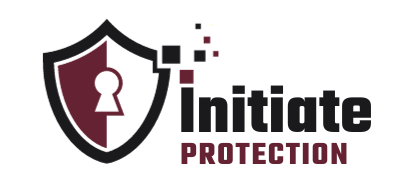Attention all! Ransomware attacks are on the rise and can impact anyone. Are you prepared to protect yourself and your data? In this article, we will explore the growing concern of ransomware and provide strategies for prevention and protection. Don’t wait until it’s too late, arm yourself with knowledge now.
What is Ransomware?
Ransomware is a form of malicious software that encrypts a victim’s files and holds them hostage until a ransom is paid. This dangerous program is often distributed through phishing emails or malicious downloads. Once a device is infected, the victim’s files become inaccessible, causing significant disruption to businesses and individuals. Unfortunately, ransomware attacks have become increasingly common and can target organizations of all sizes.
To prevent such attacks, it is important to:
- Regularly back up files
- Have strong cybersecurity measures in place
- Train employees on how to recognize and avoid threats
- Keep software up to date
In the event of an attack, having a response plan and involving law enforcement can help minimize the impact. It is crucial to be aware of the threat and take necessary precautions to safeguard against ransomware attacks.
How Does Ransomware Work?
Ransomware operates by encrypting a victim’s files or locking them out of their devices. Here are the steps involved in a ransomware attack:
- Delivery: Attackers use various methods, such as phishing emails or malicious attachments, to deliver the ransomware to the victim’s system.
- Infection: Once the ransomware is delivered, it executes and begins encrypting files or locking the device.
- Ransom
- Ransom Payment: If the victim chooses to pay the ransom, they must follow the provided instructions, usually through anonymous cryptocurrency transactions.
- Decryption or Lock Removal: Upon receiving the payment, the attacker may provide the decryption key or unlock the device.
In 2017, the WannaCry ransomware attack affected hundreds of thousands of computers worldwide, exploiting a vulnerability in the Windows operating system. This attack rapidly spread, encrypting files and demanding ransom payments. It served as a stark reminder of the global impact and urgency of ransomware threats.
Why Has Ransomware Become So Prevalent?
The prevalence of ransomware has increased due to various factors. The primary reason is the high profitability it offers to cybercriminals. Ransomware attacks can result in significant financial gains through ransom payments. Furthermore, advancements in technology have made it easier for hackers to create and distribute ransomware. The rise of cryptocurrency has also played a role, as it enables anonymous transactions, making it more challenging to trace payments.
To combat ransomware, individuals and organizations should prioritize cybersecurity measures, such as regularly updating software, using strong passwords, and educating employees about phishing attacks. Regular data backups are also crucial to mitigate the impact of an attack. Stay vigilant and implement preventive strategies to protect against ransomware threats.
What Are the Main Types of Ransomware?
Ransomware comes in various forms, each with its own unique characteristics and methods of attack. The main types of ransomware include:
- Encrypting ransomware: this type encrypts files on the victim’s system, rendering them inaccessible until a ransom is paid.
- Locker ransomware: instead of encrypting files, this type locks the victim out of their device or system, making it unusable.
- Master Boot Record (MBR) ransomware: this type attacks the computer’s MBR, preventing the operating system from booting up.
- Mobile ransomware: specifically targeting mobile devices, this type infects smartphones and tablets, locking the device or encrypting files.
- Scareware: appearing as fake security software, this type tricks users into believing their system is infected, then demands payment for removal.
- DDoS (Distributed Denial of Service) ransomware: this type uses malware to launch DDoS attacks, overwhelming a target’s network until a ransom is paid.
- Doxware: also known as leakware, this type threatens to release sensitive data unless the ransom is paid.
True story: In 2017, the WannaCry ransomware attack crippled organizations worldwide. It infected over 200,000 computers across 150 countries, encrypting files and demanding a ransom. The attack targeted vulnerable systems using a vulnerability in the Windows operating system. It highlighted the devastating impact ransomware can have on both individuals and businesses, emphasizing the importance of robust cybersecurity measures and regular software updates.
How Do Attackers Choose Their Targets?
Cyber attackers strategically choose their targets based on various factors. Here are the steps they typically follow:
- Identifying vulnerabilities: Attackers search for weaknesses in systems, networks, or individuals that can be exploited.
- Researching targets: They gather information about potential victims, such as their industry, financial status, or online presence.
- Assessing potential benefits: Attackers evaluate the potential gains from targeting a specific organization or individual, including financial rewards or political motives.
- Selecting the best approach: Based on their research, attackers choose the most effective method, such as phishing emails, social engineering, or exploiting software vulnerabilities.
- Executing the attack: Attackers launch their attack, aiming to bypass security measures and gain unauthorized access.
Fact: Over 90% of successful cyber attacks involve phishing emails as the initial point of entry, highlighting the importance of employee awareness training to prevent such attacks.
How Can You Prevent Ransomware Attacks?
To prevent ransomware attacks, it is crucial to follow these steps:
- Keep software up to date: Make sure to regularly update your operating systems, antivirus software, and other applications to patch any vulnerabilities.
- Be cautious of email attachments and links: It is best to avoid opening suspicious emails or clicking on unknown links or attachments.
- Use strong, unique passwords: Create complex and unique passwords for each online account to make it harder for hackers to access your information.
- Backup data regularly: It is important to regularly backup important files to an external hard drive or cloud storage to ensure you still have access to them in case of an attack.
- Enable pop-up blockers: Protect yourself from malicious websites by using pop-up blockers to prevent intrusive ads or malware from being installed.
- Be mindful of downloads: Only download files from trusted sources and make sure to scan them for malware before opening.
- Educate yourself and your team: Stay informed about the latest ransomware techniques and educate your employees on the best practices for cybersecurity.
What Are the Best Practices for Cybersecurity?
To ensure strong cybersecurity, it is crucial to follow best practices:
- Regularly update software and operating systems to patch any vulnerabilities.
- Implement strong, unique passwords and enable multi-factor authentication.
- Use a reliable antivirus program and regularly scan for malware.
- Encrypt sensitive data and use secure protocols for communication.
- Regularly backup important files offline or in the cloud.
- Train employees on cybersecurity awareness, including recognizing phishing attempts and practicing safe browsing habits.
- Monitor network activity for any suspicious behavior or unauthorized access.
- Have an incident response plan in place to quickly respond to and mitigate cyberattacks.
- Stay informed about the latest cybersecurity threats and trends to adapt security measures accordingly.
How Can You Educate Your Employees about Ransomware?
To educate your employees about ransomware, follow these steps:
- Provide training sessions on ransomware awareness, covering the workings of ransomware and common methods of attack.
- Teach employees about the importance of strong passwords and proper password management.
- Encourage employees to exercise caution when opening email attachments or clicking on suspicious links.
- Regularly update and patch software and systems to protect against vulnerabilities.
- Implement multi-factor authentication to add an extra layer of security.
- Conduct simulated phishing exercises to test employees’ ability to identify and respond to phishing attempts.
- Establish clear protocols for reporting any suspicious activities or incidents to the IT department.
What Are the Steps to Take If You Are a Victim of Ransomware?
If you have been targeted by ransomware, it is crucial to act quickly in order to minimize the damage and safeguard your data. Follow these steps to protect yourself:
- Isolate the infected device from the network to prevent further spread of the attack.
- Report the incident to law enforcement and provide all available details.
- Do not give in to the ransom demand as there is no guarantee that your files will be recovered.
- Consult with a cybersecurity expert to evaluate the extent of the attack and create a plan for recovery.
- Restore your files from a previously created backup before the attack occurred.
- Update and strengthen your security measures to prevent future attacks.
Remember, prevention is crucial. Regularly back up your data, educate yourself about phishing tactics, and keep your software up to date to reduce the risk of falling victim to ransomware. Stay vigilant and proactive in safeguarding your digital assets.
Should You Pay the Ransom?
Paying the ransom in a ransomware attack is a complex decision that requires careful consideration. There are multiple factors to consider, including the value of the encrypted data, the likelihood of the attacker providing the decryption key, and the legal and ethical implications of negotiating with cybercriminals.
Generally, experts advise against paying the ransom as it may encourage further attacks and there is no guarantee that the attacker will hold up their end of the deal. In addition, law enforcement agencies and cybersecurity professionals recommend focusing on prevention, having backup systems in place, and reporting the incident to the authorities.
In 2017, the city of Atlanta was targeted in a ransomware attack, with the hackers demanding a ransom of $51,000 in bitcoin. Despite the city’s critical systems being crippled, they made the decision not to pay the ransom and instead worked tirelessly to restore their systems and strengthen their cybersecurity measures. While the incident caused significant disruption and financial losses, Atlanta’s choice not to pay the ransom sent a powerful message and emphasized the importance of being prepared and resilient in the face of such attacks.
How Can You Recover Your Data?
- Assess the situation: Determine the extent of data loss and identify the affected systems.
- Isolate infected systems: Disconnect infected devices from the network to prevent further spread.
- Report the incident: Inform your IT department or security team to initiate a response.
- Restore from backups: If you have recent backups, restore your data from those backups.
- Engage professional help: Consult with cybersecurity experts who specialize in data recovery.
- Consider decryption tools: Research if there are any available decryption tools specific to the ransomware variant you encountered.
- Avoid paying the ransom: Paying the ransom does not guarantee data recovery and encourages further attacks.
- Implement stronger security measures: Strengthen security protocols to prevent future ransomware attacks.
What Are the Latest Strategies for Protecting Against Ransomware?
To protect against ransomware attacks, it is crucial to implement the latest strategies and security measures. Here are some suggestions:
- Keep software and operating systems regularly updated to patch vulnerabilities.
- Utilize strong, unique passwords and enable multi-factor authentication.
- Educate employees about the dangers of phishing emails and suspicious links.
- Regularly backup data and store it offline or in a secure cloud storage.
- Utilize robust cybersecurity solutions such as firewalls, antivirus software, and intrusion detection systems.
- Implement network segmentation to limit the spread of ransomware.
By following these strategies, individuals and organizations can greatly reduce the risk of falling victim to ransomware attacks and effectively protect their valuable data.
What Technologies Can Help Block Ransomware Attacks?
Using advanced technologies can help prevent ransomware attacks and safeguard your data. Here are some effective tools to consider:
- Endpoint Protection: Deploying robust antivirus software and firewalls can detect and block ransomware before it infiltrates your systems.
- Behavior Analysis: Implementing solutions that analyze user behavior and network activities can identify suspicious patterns and stop ransomware from spreading.
- Email Filtering: Utilizing email scanning tools can detect and quarantine malicious attachments or links, preventing ransomware from being downloaded.
- Patch Management: Keeping software and operating systems up to date with the latest security patches can address vulnerabilities that ransomware exploits.
- Data Backup and Recovery: Regularly backing up your data and storing it securely offline ensures that you can recover your files without paying a ransom.
A manufacturing company successfully prevented a ransomware attack by implementing behavior-based detection software. The system detected abnormal file access patterns and swiftly blocked the ransomware from encrypting their data, saving them from potential loss and hefty ransom demands.
What Are the Advantages of Using Cloud-Based Backup Solutions?
There are several advantages to using cloud-based backup solutions for protection against ransomware. Firstly, these backups provide an off-site storage option, ensuring that your data is safeguarded not only from ransomware attacks but also from physical damage or loss. Secondly, cloud-based backup solutions often come with advanced encryption and security measures, making it difficult for attackers to compromise your data. Additionally, these backups offer scalability, allowing you to easily adjust storage capacity as needed. Lastly, cloud-based backups enable quick and easy data recovery, reducing downtime and minimizing the impact of ransomware attacks.
Pro-tip: It is important to regularly test your backup and recovery processes to ensure their effectiveness.
How Can You Stay Informed about New Ransomware Threats?
To stay informed about new ransomware threats, follow these steps:
- Stay updated: Regularly check reliable sources for news and updates on ransomware attacks and trends.
- Subscribe to alerts: Sign up for cybersecurity newsletters and alerts to receive timely information about new threats.
- Join forums and communities: Participate in online communities and forums dedicated to cybersecurity to learn from experts and share knowledge.
- Attend webinars and conferences: Attend virtual or in-person events to gain insights from industry professionals and stay abreast of the latest developments.
- Follow security blogs: Follow reputable cybersecurity blogs to get valuable insights, guidance, and tips on preventing and staying informed about new ransomware threats.
By staying informed, you can proactively protect yourself and your organization from the ever-evolving landscape of ransomware threats.
Frequently Asked Questions
What is ransomware and why is its rise a concern?
Ransomware is a type of malware that encrypts a user’s files and demands payment, usually in the form of cryptocurrency, in exchange for the decryption key. Its rise is a concern because it can cause financial loss and disrupt business operations for individuals and organizations.
How can I prevent ransomware attacks?
To prevent ransomware attacks, it is important to regularly update your operating system and software, use strong and unique passwords, and be cautious when clicking on links or downloading attachments from unknown sources. It is also recommended to use reputable antivirus software and regularly back up your files.
What are some protection strategies against ransomware?
Some protection strategies against ransomware include implementing network segmentation, restricting user access privileges, and using email filters to block suspicious emails. It is also important to educate employees on how to identify and report potential ransomware threats.
What should I do if I become a victim of a ransomware attack?
If you become a victim of a ransomware attack, it is important to not pay the ransom as it does not guarantee that your files will be decrypted. Instead, you should disconnect your device from the internet, contact law enforcement, and seek professional help to remove the ransomware and restore your files from a backup.
How can I stay updated on the latest ransomware threats?
You can stay updated on the latest ransomware threats by regularly checking reputable cybersecurity websites and news outlets. It is also beneficial to sign up for alerts from your antivirus software provider and follow cybersecurity experts on social media for timely updates and prevention tips.
What are some long-term prevention strategies against ransomware?
Some long-term prevention strategies against ransomware include implementing a security awareness training program for employees, conducting regular vulnerability assessments and penetration testing, and establishing an incident response plan in case of a ransomware attack. It is also recommended to have a disaster recovery plan in place to quickly restore systems and files in case of an attack.





